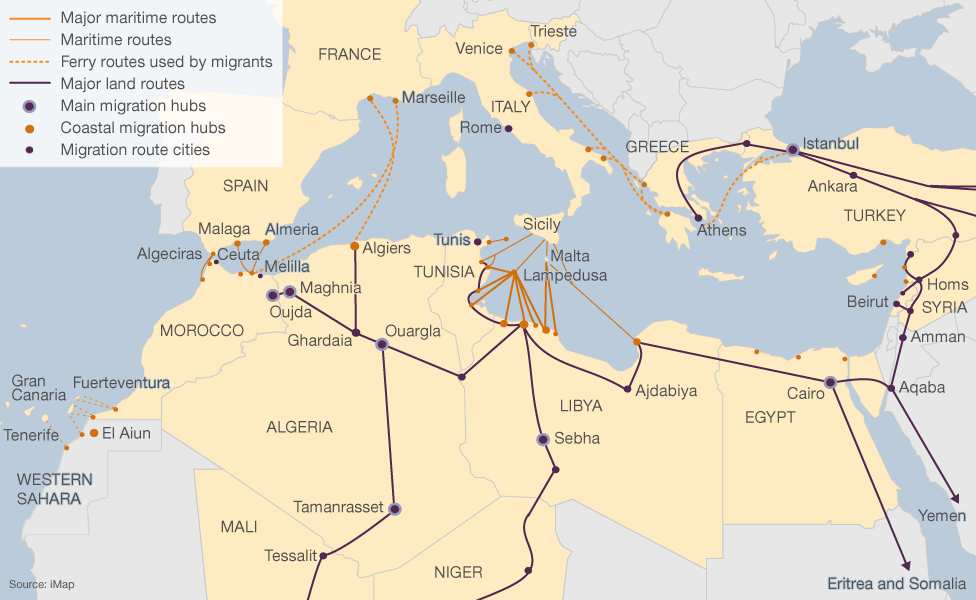
As conflict continues to spread across much of the Middle East and North Africa, immigration and refugee influx patterns have made their way into the foreground of internal European Union affairs. In 1951, the Geneva Convention recognized the unalienable right of a refugee to flee their home country if they are subject to persecution due to their race, religion, nationality, or membership to a social group, or political affiliation. Since then, the United Nations High Commissioner for Refugees (UNHCR) has estimated that there is a total of 8.8 million refugees worldwide, not including an estimated 2 million people living in refugee-like conditions, and the 4.8 million displaced Palestinians who are officially recognized as refugees in most countries. In terms of its purpose, the Geneva Convention and its 147 signatories grant refugees a unique legal status in their new home country.
The European Union, one of the world’s largest receivers of refugees worldwide, recorded 264,000 applicants in 2014 alone, according to the UNHCR. While many EU countries, like the UK and Sweden, are financially equipped to accept such high numbers of refugees, most of the immigrants and asylum seekers coming from North Africa and the Middle East end up in Mediterranean countries like Italy, Greece, and Spain that have a much more challenging task to deal with.
“Death boats,” as they’ve infamously been called, bring refugees and other immigrants across the Mediterranean in the hundreds (and even thousands in the summertime). This dangerous trip to Europe has killed over 20,000 refugees over the past decade, and the number only continue to rise as conflict continues to spread across the Middle East and North Africa. Now, as the European Union begins to struggle with such high levels of refugee influx, the problem has become how to deal with such high numbers arriving in the EU. The EU has set itself to a very strict set of rules regarding how to manage and process refugees as they arrive in Europe. Their policy framework includes the basic fact, that no European country is allowed to turn back an immigrant or refugee once they have set foot on European soil, and must be rightly processed into the EU’s collective refugee and asylums seeker database. These rules, however, are proving harder and harder for some countries to follow.
Allegedly, Spain is one of the EU countries that is facing the struggle of handling refugees and immigrants legally. One of the most important and relevant connections that Spain has in North Africa is Melilla and Ceuta, to small cities which are both physically located inside of Morocco but are a part of Spanish, and therefore European, territory. Miles to barbed wire fences surround both of the cities, yet they still attract hundreds of immigrants every night to make their way into Spain to move farther into Europe. Hopping the fence, though, involves danger, violence, and law breaking on the part of the Spaniards.
In a recent study conducted by Human Rights Watch, the NGO discovered that the country has been implementing illegal “pushbacks” that send dozens of immigrants back across the border into Morocco. These illegal pushbacks, conducted by Spain’s Guardia Civil, involve physically beating immigrants, often until they become unconscious. These pushbacks are entirely illegal, not only on the level of the Spanish government, but also on the level of the EU and the United Nations.
Human Rights Watch also obtained a video from a freelance journalist that captured the pushbacks taking place on the Spanish-Moroccan border in August of 2014 that affirms the fact that most immigrants that make their way into Spain by Melilla are not properly processed through the deportation process that would send them safely back to Morocco. The Spanish Foreigner, or immigrant, law states that every immigrant or refugee that arrives on Spanish soil must be escorted to the National Police station for identification and the initiation of the deportation process. At this point in the process, a migrant can request an interpreter and a lawyer, which could also initiate the process for achieving international protection, or asylum, in Spain.
Because Spain continues to send migrants back over the border in these mass pushbacks, it limits the possibility of a potential asylum seeker to find protection as a refugee in Spain, which keeps them in the dangerous cycle of potentially being sent back to their country of origin. Not only is Spain violating the laws of the European Union, but also UNHCR’s policy on the unique treatment of refugees.
Probably the most concerning aspect of this issue is that nothing has been done thus far to stop Spain from performing these illegal pushbacks of migrants and potential asylum seekers. The European Union, even though it is one of the most developed political entities in the world, has a hard time enforcing humane and fair immigration laws, which points to core issues in refugee policy making in the world in general. Without developed countries or the United Nations paving the way for successful processing and treatment of refugees, it will be much more challenging to develop continually improving refugee and immigration policy.
Alec Hernandez ’18 is in Timothy Dwight College. He writes a beat blog on international refugee policy and current events. Contact him at alec.hernandez@yale.edu.
